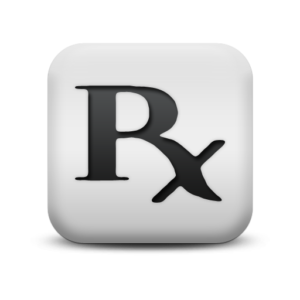Simple Guide: Prescription Drug Coverage
 Prescription drug coverage in health insurance plans can sometimes be confusing. We’ve put together a simple, short guide that outlines the four “tiers” of prescription drug coverage found in most individual health insurance plans, so that you can understand your options better.
Prescription drug coverage in health insurance plans can sometimes be confusing. We’ve put together a simple, short guide that outlines the four “tiers” of prescription drug coverage found in most individual health insurance plans, so that you can understand your options better.
Most individual health insurance plans will have four (4) different tiers of prescription drug coverage. It’s important to understand the difference between these four tiers, and how the deductibles and co-payments work within them.
We’ll briefly explain the different tiers, and how they function. Keep in mind that this is just a general overview, and if you have questions about your specific plan, contact us. *Remember: most individual health insurance plans will contain these four tiers of coverage. Here are the four tiers:
- Tier 1 Prescription Drugs: these are usually what are called “generic” prescription drugs. They typically have the lowest co-payments, and most of the time there is not a deductible involved.
- Tier 2 Prescription Drugs: these are what are called “preferred brand name” prescription drugs. This tier moves out of generic prescription coverage, and into brand name drugs. “Preferred” means that they are preferred by the insurance companies because of their lower cost. Certain generic drugs can also sometimes be included in this tier. Co-payments are usually higher (compared to tier 1 generic drugs), and sometimes there is an additional annual deducible involved (depending on your plan).
- Tier 3 Prescription Drugs: these are usually referred to as “NON preferred brand-name” prescription drugs. They are considered higher cost pharmaceuticals, and are therefore “non preferred” by the insurance companies. Many times, your insurer will try to find alternatives in the lower two tiers. Co-payments are usually higher, prior authorizations (doctor approvals) are more prevalent, and sometimes there are additional deductibles involved. Certain specialty drugs (Tier 4 drugs) can also be included in this list.
- Tier 4 Prescription Drugs: these are usually what are called “specialty” prescription drugs. They are considered the highest-cost pharmaceuticals, and are most often highly expensive specialty drugs. Prior authorizations (doctor approvals) are highly prevalent, and cost-sharing is the highest. Typically there is what is called co-insurance at this point, where you pay a percentage of the entire cost of the drug, and the insurance company pays the remainder.
Prescription drug coverage is an important concept to understand. Having a good handle on the concepts above can help you improve coverage, save time, and save money.
Thanks for stopping by, we hope you found our information to be valuable. Check back at our blog to get further information about funding healthcare. Also, please share with your friends, clients, colleagues, and family. Here are a few of our other information outlets:
Home Page: https://policyadvantage.com
Twitter: http://www.twitter.com/PolicyAdvantage
Facebook: http://www.facebook.com/PolicyAdvantage
YouTube: http://www.youtube.com/PolicyAdvantage
Pinterest: http://www.pinterest.com/PolicyAdvantage
Word Press (you are here): http://www.policyadvantage.wordpress.com
